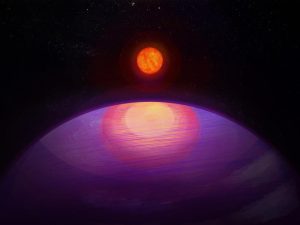
Solar systems keep finding new ways to surprise us and to convince us that we don’t actually understand the full diversity of what is even possible. Case in point: the red dwarf star LHS 3154 has a mass of just over 100 Jupiters. Until recently, we thought stars this tiny would only have tiny planets, but this system doesn’t appear to have gotten that memo. LHS 3154 is nine times smaller than our Sun, or 114 times larger than Jupiter. Its closest planet is a super-Earth with a mass thirteen times larger than our planet’s. While that is still small compared to Jupiter, it makes this world the largest planet found orbiting this size of a star.
According to research team member Suvrath Mahadevan, “This discovery really drives home the point of just how little we know about the universe. We wouldn’t expect a planet this heavy around such a low-mass star to exist.”
As we discussed in detail last week, we just don’t understand planet formation. But this discovery gives us new data to fold into future models. As Mahadevan goes on to say, “What we have discovered provides an extreme test case for all existing planet formation theories. This is exactly what we built Habital Zone Planet Finder to do, to discover how the most common stars in our galaxy form planets — and to find those planets.”
This work is published in the journal Science with lead author Guðmundur Stefánsson.
